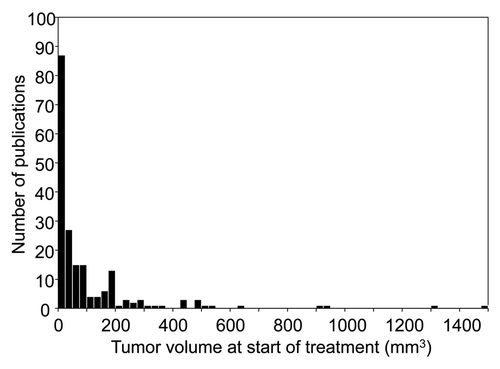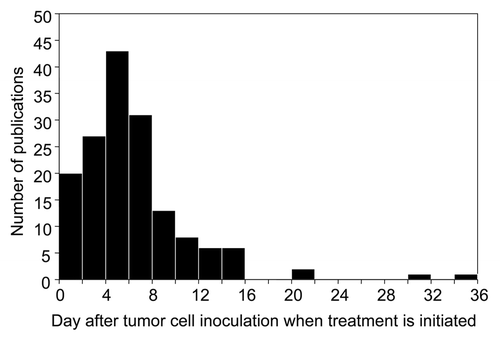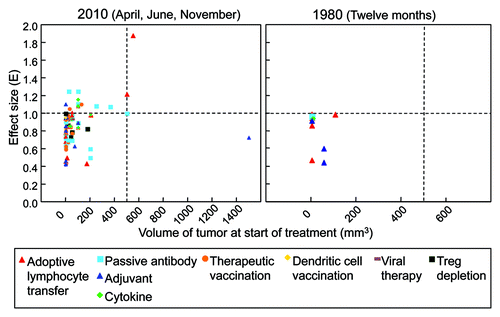Figures & data
Figure 1. Precipitous falloff in the number of publications in the year 2010 with increasing size of tumors treated by immunotherapy. A search of PubMed using the keywords “immunotherapy” AND “cancer” recovered 195 experimental studies that met our selection criteria. 75% of tumors treated in these studies were smaller than 121 mm3. Note the sparseness of publications presenting tumors larger than 375 mm3. (n = 195; Q1 = 0.5, Q2 = 45, Q3 = 121.4)

Figure 2. Most experimental tumors are treated less than a week after tumor cell inoculation. The median time reported was five days. All 158 cancer immunotherapy studies listed in PubMed meeting our selection criteria for 2010 using syngeneic murine tumor models are presented. Only nine tumors have grown for 14 d or longer before treatment. (n = 158; Q1 = 4, Q2 = 5, Q3 = 8)

Figure 3. Most experimental immunotherapies published treat small tumors yet succeed only at slowing or delaying tumor growth, but in several recent reports, larger tumors are being treated and a few reports present tumor regression. An effect size (E) of 1 indicates the treatment arrested tumor growth. An E < 1 indicates that the treated tumor still grew progressively, but only slower than the control or in a delayed fashion, i.e., a reduction of the growth rate of the tumor. An E > 1 indicates tumor regression. (Left panel) Detailed analysis was done for all experimental cancer immunotherapy publications listed in PubMed for April, June, and November of 2010. Regression of tumors larger than 200 mm3 is observed only after passive antibody or adoptive T cell therapy. (n = 74). (Right panel) The same analysis was performed for those publications in the entire year of 1980. Very few publications presented analyzable data. No publication uses tumors larger than 200 mm3, and regression is not observed at all. (n = 10).
